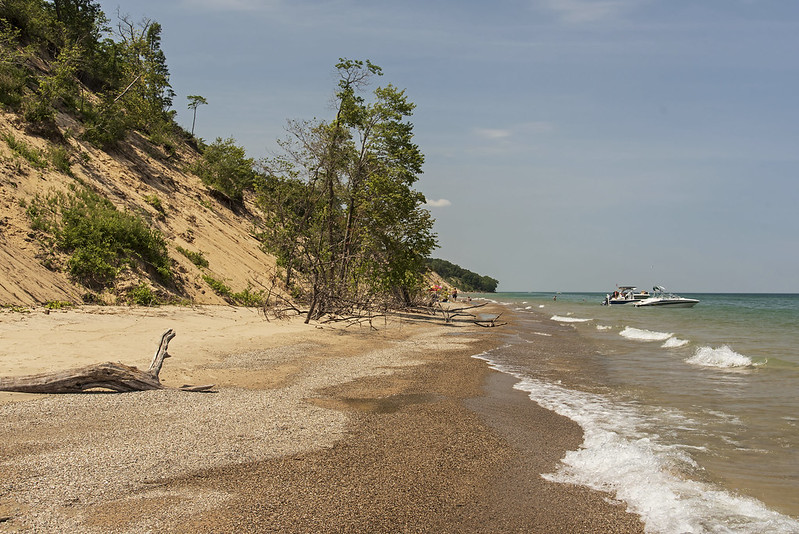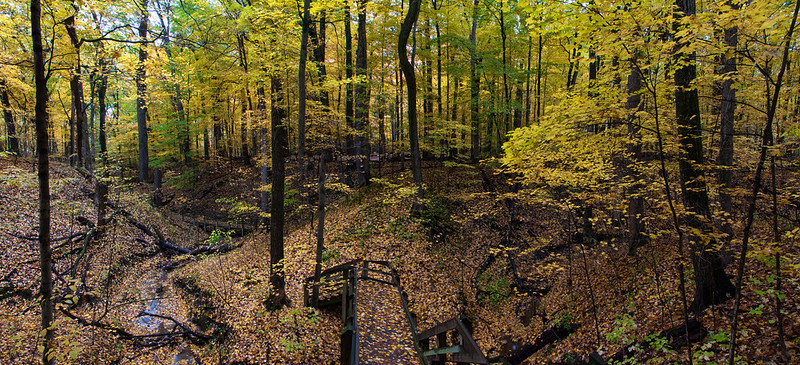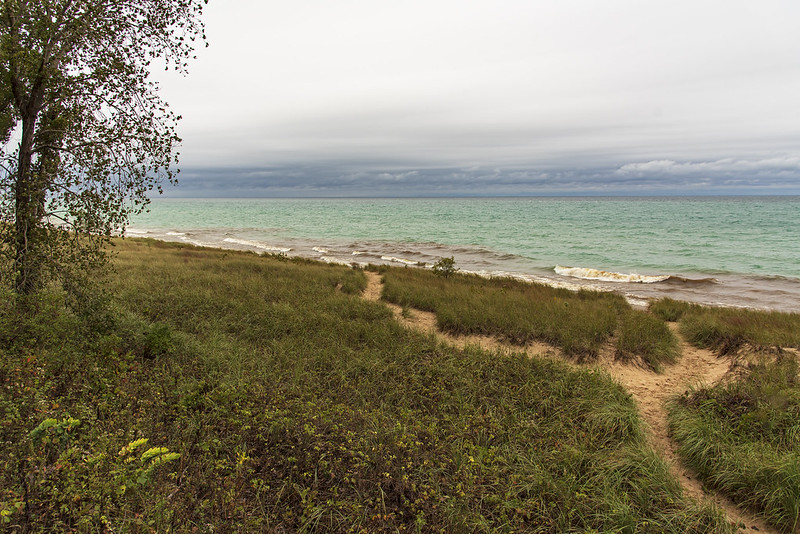
Contrary to what many people believe, the dunes along the southern shore of Lake Michigan are ever-changing - have been, and will continue to be. The forces of nature such as rain, wind, and the waves erode parts of the beach and dune, and build another.
Rising water levels this year, along with some "starving" of the beach are contributing to the collapse of portions of the windward sides of the dunes in the Indiana Dunes National Park. A starving beach is one where the natural replenishment of sand is slower than the loss of the sand due to wind and wave action, so the beach and associated dunes lose sand.
These dunes are crumbling at a relatively fast rate. The paths and trails that once meandered along the ridge are long gone - washed into Lake Michigan - not because of people walking on them, as many will attempt to mislead the visitor. Walking on some sand dunes and plants will certainly disrupt the natural state of the dunes, and often kill the plants that hold the dunes in place. But this is a case of the lake taking over, not human activity. The Michigan City pier a mile or so away has been blamed for some beach starvation, and while this may be true to some extent, it seems unlikely that the single pier could affect the beaches miles away to such a great extent.
The trees seen in this photograph were growing on the top of the dune just a few weeks ago. The waves undermined the foot of the dunes, and slowly collapsed the side. Some trees fell sideways and were washed away by the waves, but these just slid down in an upright position, and the waves buried them in sand. They appear to have been there for years, but in fact, they have only been there a few short weeks.

Wind, rain, and gravity have all combined to create some interesting formations as the dunes erode. These formations look a lot like the mountains and stone formations of Bryce Canyon National Park. They change right before your eyes, small amounts of sand slide slowly down the dune, others crumble and chunks roll down. Some of this movement resembles waterfalls, but of sand. Beautiful fans of sand form at the foot of the dunes, but are quickly washed away by the waves as soon as the winds pick up on Lake Michigan.

While it's sad to see some of these majestic dunes crumble - especially the ones I used to frequent, it's all just a natural part of the dune's life cycle.
 While hiking the colorful trails of the Chellberg Farm, I headed toward the old farmhouse and barn. These building are open from time to time, to demonstrate farm life of the 1800's. In the past two years, the barn and fields have been the home to a few farm animals including two horses. As I approached the barn, the horses immediately came outside to greet me. I stood only a foot or two away from the fence, and they walked up to me. I tried to put a few feet between us so I could capture some photos, but they kept following me, staying right with me. I spent a little time with them, then continued on my way to the other side of the pasture. From there, I was able to capture some photos of the horses from a distance. Of course, this horse noticed me right away, then began heading toward me again.
While hiking the colorful trails of the Chellberg Farm, I headed toward the old farmhouse and barn. These building are open from time to time, to demonstrate farm life of the 1800's. In the past two years, the barn and fields have been the home to a few farm animals including two horses. As I approached the barn, the horses immediately came outside to greet me. I stood only a foot or two away from the fence, and they walked up to me. I tried to put a few feet between us so I could capture some photos, but they kept following me, staying right with me. I spent a little time with them, then continued on my way to the other side of the pasture. From there, I was able to capture some photos of the horses from a distance. Of course, this horse noticed me right away, then began heading toward me again.  The old farm house wasn't open on this day, but I was still able to wander the grounds. In March, the Maple Sugar Days will be held here, and the kitchen will be filled with the scent of fresh cookies baked on the antique wood stove. For now, I can only imagine how many children played on that porch and in the field in front of the house.
The old farm house wasn't open on this day, but I was still able to wander the grounds. In March, the Maple Sugar Days will be held here, and the kitchen will be filled with the scent of fresh cookies baked on the antique wood stove. For now, I can only imagine how many children played on that porch and in the field in front of the house.  Behind the farm house and barn, lies the colorful sugarbush, the maple tree - filled woods bursting in color at this time of year.
Behind the farm house and barn, lies the colorful sugarbush, the maple tree - filled woods bursting in color at this time of year.











































